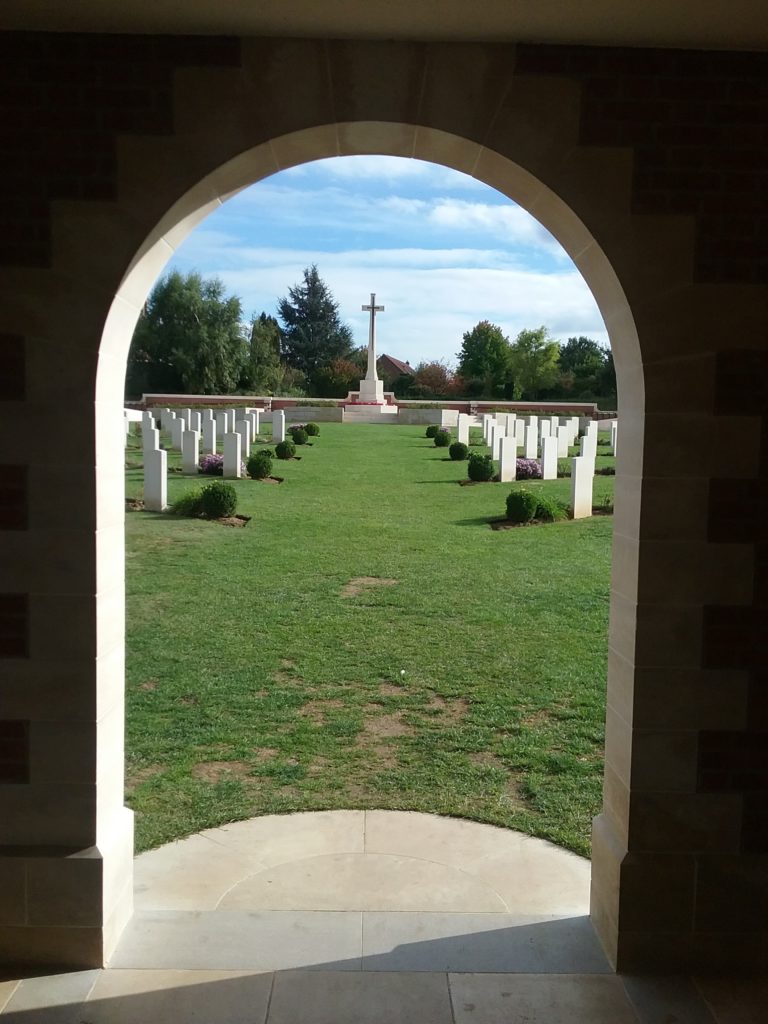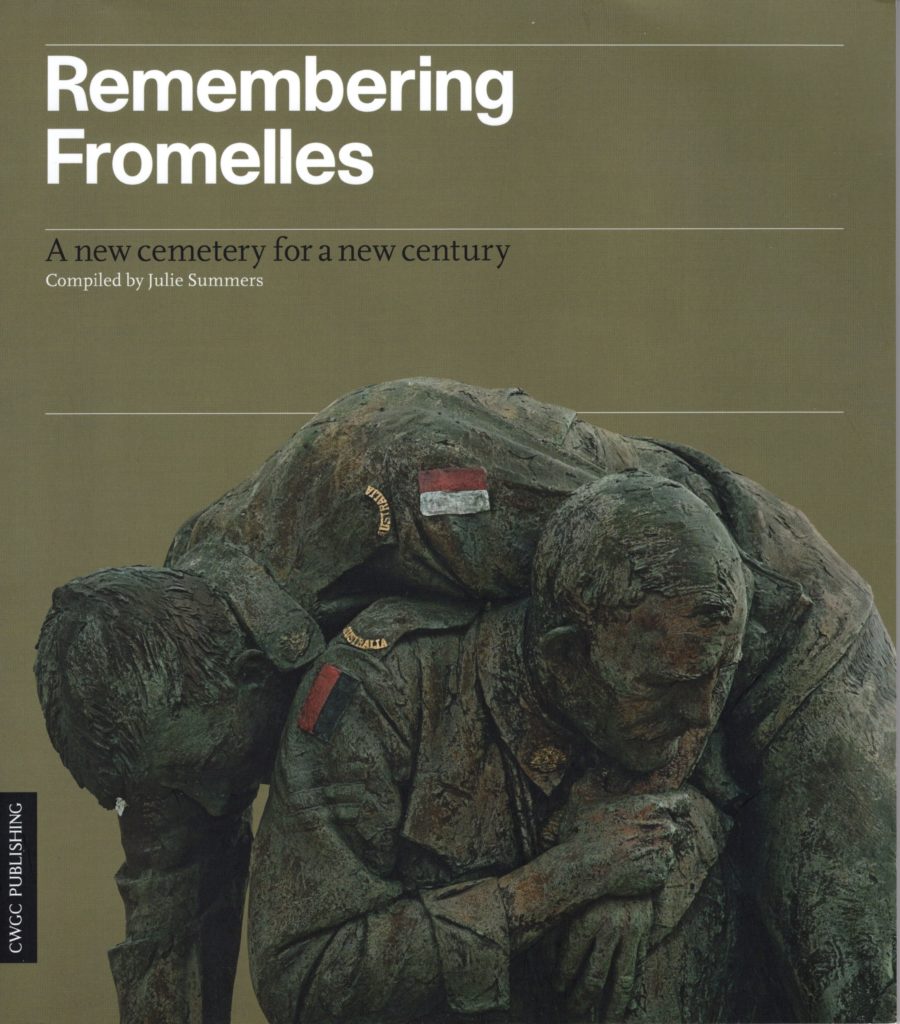16 July 2020: Today, the Commonwealth War Graves Commission held an online zoom meeting to mark the 10th Anniversary of the dedication of the Fromelles (Pheasant Wood) Military Cemetery. Stealing a subtitle from a book, this is “A new cemetery for a new century.” The reason for this subtitle is explained below. I was fortunate enough to visit Fromelles with a client/friend in 2018 and I HIGHLY RECOMMEND THAT READERS WATCH THE MEETING AND VISIT THE CEMETERY WHEN POSSIBLE.
The Battle of Fromelles—19-20 July 2016
The tiny village of Fromelles is situated west of Lille and south of Armentieres, approximate 80 km (50 miles) north of the Somme battlefield. Wanting a diversionary attack to discourage the Germans from moving additional divisions to the Somme, the British High Command ordered two divisions new to the Western Front to attack a 4,000-yard section of the German line at Fromelles. The two divisions were the 5th Australian Division and the 61st British (South Midland) Division. During the two days of fighting casualties amounted to 5,533 Australian troops and 1,547 British troops. This represented the heaviest concentration of Australian losses in the country’s military history. Recovery of bodies was generally not possible immediately after the failed assault.
Years of Research: 1980s – early 2000s
The Australian losses at Fromelles became the obsession of Lambis Englezos, a teacher from Victoria. Over a multi-decade period he researched and visited the battlefields, questioning what had happened to the missing. This research included looking at German records and researching Red Cross records in Australia. In 2003 he made public his hypothesis that the Germans had buried large numbers of Australian casualties after the battle, and that the post-war graves registration units had somehow missed these burials. But, a panel of experts concluded that there was insufficient evidence to conduct a larger investigation. Back to more research and work.
Discovery of Bodies: May 2008
In May 2008 the Australian Army History Unit (AHU) asked the Glasgow University Archeological Research Division (GUARD) to conduct a second look at the area of and behind Pheasant Wood. A limited excavation was done, with no remains exhumed. Now, more than 90 years after the battle, the mass burial of Australian and British soldiers was confirmed.

The Power of Genetics and the Building of a new Cemetery: 2009 to Today
Between May and September 2009 the remains of 250 soldiers were removed from the Pheasant Wood mass burial locations, and a huge team of scientists immediately started work to identify them. This included seeking DNA samples from Australians who had relatives who were thought to have died at Fromelles. Publication in the press and by interested parties helped to spread the word in this time before social media.
Given the numbers involved, there was no CWGC cemetery in the area that could accept 250 soldiers, and there was no desire to split up these men who had fought and had been buried together in 1916. Thus, plans for an entirely new cemetery in Fromelles were also drawn up and it was constructed—all in record time. This was the first new CWGC cemetery constructed since the 1960s!
All but one of the 250 soldiers exhumed from their original resting place were buried at the new Fromelles (Pheasant Wood) Military Cemetery during ceremonies in January and February 2010. The last soldier was buried at the cemetery’s official dedication on Monday, 19 July 2010—Ninety-four years after the battle!
A Wikipedia article stated that, by 17 March 2010, 75 bodies had been named. Of the remaining 175, 128 were identified as Australian, 3 as British and 44 were unidentified. A CWGC press release dated 19 July 2019—the 103rd anniversary of the Battle and nine years after the dedication—stated that 166 soldiers have been identified by name, leaving only 84 unidentified soldiers.
The tenacity of research involved and the ability of science to identify two-thirds of the soldiers decades later makes Fromelles (Pheasant Wood) Military Cemetery a unique cemetery with a fascinating story to tell through the cemetery and attached visitor’s center. Visit it when you get the chance and get knee deep into history—and science!

#kneedeepintohistory #meuseargonne #battlefieldtours #ww1tours #ww2tours

Leave a Reply